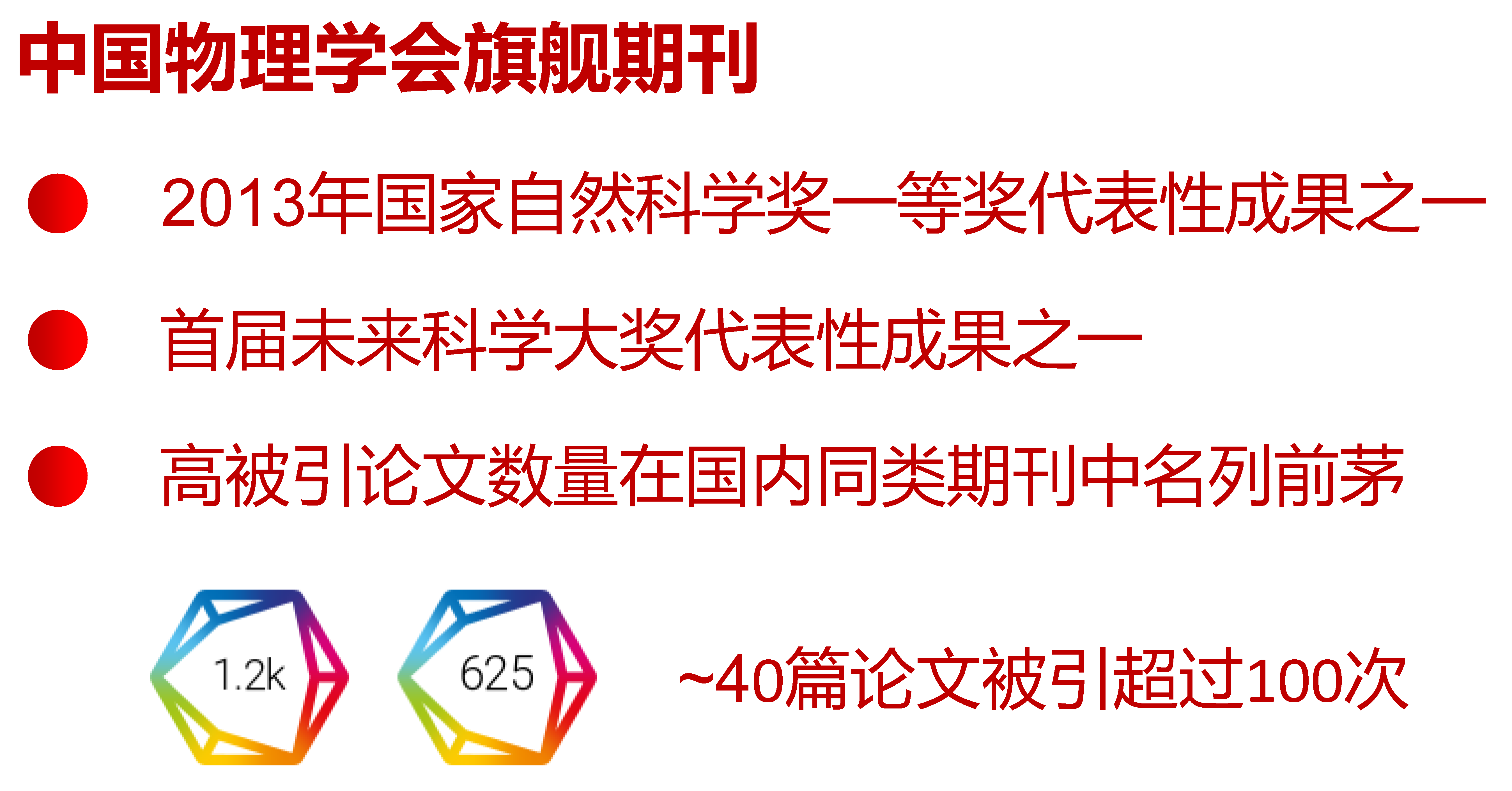博文
《物理世界》研究进展: 钪刷新元素超导温度
|

EXPRESS LETTER
Superconductivity above 30 K Achieved in Dense Scandium
Xin He (何鑫), Changling Zhang (张昌玲), Zhiwen Li (李芷文), Sijia Zhang (张思佳), Shaomin Feng (冯少敏), Jianfa Zhao (赵建发), Ke Lu (卢可), Baosen Min (闵保森), Yi Peng (彭毅), Xiancheng Wang (望贤成), Jin Song (宋静), Luhong Wang (王鲁红), Saori I. Kawaguchi, Cheng Ji (吉诚), Bing Li (李冰), Haozhe Liu (刘浩哲), J. S. Tse, and Changqing Jin (靳常青)
Chin. Phys. Lett. 2023 40 (10): 107403
DOI: 10.1088/0256-307X/40/10/107403
研究快讯
钪刷新元素超导温度
中国科学院物理研究所靳常青团队发现钪元素在高压具有超过30 K的超导,为目前唯一呈现30 K以上超导温度的元素超导体,超导温度的上升和压力调控的多轨道构效演化相关联。
This work has been highlighted in a research update published in Physics World.
Scandium breaks temperature record for elemental superconductors
Isabelle Dumé

Scandium is the only known elemental superconductor to have a critical temperature in the 30 K range. This phase diagram shows the superconducting transition temperature (Tc) and crystal structure versus pressure for scandium. The measured results on all the five samples studied show consistent trends. (Courtesy: Chinese Phys. Lett. 40 107403)
Scandium remains a superconductor at temperatures above 30 K, making it the first element known to superconduct at such a high temperature. The record-breaking discovery was made by researchers in China, Japan and Canada who subjected the element to pressures of up to 283 GPa – around 2.3 million times atmospheric pressure at sea level.
Many materials become superconductors – that is, they conduct electricity without resistance – when cooled to low temperatures. The first superconductor to be discovered, for example, was solid mercury in 1911, and its transition temperature Tc is only a few degrees above absolute zero. Several other superconductors were discovered shortly afterwards with similarly frosty values of Tc.
In the late 1950s the Bardeen–Cooper–Schrieffer (BCS) theory explained this superconducting transition as the point at which electrons overcome their mutual electrical repulsion to form so-called “Cooper pairs” that then travel unhindered through the material. But beginning in the late 1980s, a new class of “high-temperature” superconductors emerged that could not be explained using BCS theory. These materials have Tc above the boiling point of liquid nitrogen (77 K), and they are not metals. Instead, they are insulators containing copper oxides (cuprates), and their existence suggested it might be possible to achieve superconductivity at even higher temperatures.
The search for room-temperature superconductors has been on ever since, as such materials would considerably improve the efficiency of electrical generators and transmission lines, while also making common applications of superconductivity (including superconducting magnets in particle accelerators and medical devices like MRI scanners) simpler and cheaper.
A simple platform for studying superconductivity
Elemental superconductors have attracted considerable attention during this search because they provide such simple platforms for studying superconductivity. Roughly 20 elements are known to be superconductors at ambient pressures. Of these, niobium has the highest Tc, at around 9.2 K. A further 30 elements become superconducting at high pressures, but the previous record Tc in this group was just 26 K, for the element titanium.
In earlier work, researchers reported that scandium (Sc) undergoes four structural phase transitions at pressures of about 23, 104, 140 and 240 GPa, producing Sc II, Sc III, Sc IV and Sc V, respectively. Scandium was also known to become superconducting at 21 GPa with a Tc of around 0.35 K, and previous experiments had pushed this Tc as high as 19.6 K at 107 GPa, near the phase boundary between the Sc II and Sc III phases.
In the new work, which lead researcher Changqing Jin describes as “a follow up to our previous discovery” of superconductivity in titanium at 26 K, a team from the Institute of Physics, Chinese Academy of Sciences (IOPCAS) and the School of Physics, University of Chinese Academy of Sciences (UCAS) increased the pressure on scandium to 238 GPa. In doing so, they discovered a Tc of above 30 K in the V phase of the element. The result means that scandium is the only known elemental superconductor to have a Tc in the 30 K range, and the team suggests this value may go even higher with further compression.
In a separate study, a team of researchers led by Chen Xianhui from the University of Science and Technology of China (USTC) of the Chinese Academy of Sciences (CAS) and Sun Jian from Nanjing University independently obtained similar results showing that the Tc of scandium increases monotonically into the 30 K region as pressure is increased. Both teams obtained their results by loading their scandium sample into a diamond anvil cell and measuring the element’s conductivity as a function of temperature as they increased the pressure. Such experiments are technically challenging, and several attempts were necessary before they reached the high pressure of 283 GPa.
Pressure-induced electron transfer
In the BCS framework, superconductivity stems from interactions between electrons and vibrations in the material’s crystal lattice (phonons). According to the researchers, scandium fits neatly into this picture, as high pressures cause electrons to move out of the element’s 4s orbitals and into its 3d ones, increasing the electron-phonon coupling.
“The above 30 K Tc observed in the Sc V phase not only sets a new record for elemental Tc, but also points to a fresh strategy for exploring high Tc superconductivity in diverse elemental solids,” Jin tells Physics World. “Such elements could be promising for potential applications in extreme environments.”
Jin adds that he and his colleagues are now trying to reach high Tc phases at lower or even near-ambient pressure by introducing “chemical pressure”, which involves substituting or adding chemical entities to a solid network.
© Copyright 2023 IOP Publishing Ltd
研究快讯集锦
三类Kagome结构的高通量计算及热力学稳定性评估
利用深度学习预测复杂网络的热导特性
La3Ni2O7高温超导电性的微观有效模型及密度矩阵重正化群研究
活性转子系统的局域转动阻塞和多级超均匀性
拓扑半金属磷化钼中的巨大非线性光学效应
具有超宽温域、低电流可调性的巨二维斯格明子拓扑霍尔效应
超离子态冰相变导致的反常热输运
FeGe中的电子关联诱导的电荷密度波
等离子体输运中的扩散拓扑物相
用于同质架构储备池计算的莫尔突触晶体管
基于非厄米趋肤效应的二维传热调控
钪刷新元素超导温度
通过梯度下降法实现声子晶体的逆向设计
几何热电泵浦:不同于塞贝克和热释电的新型能量效应
二维AlH2单层:零维电子态与超导电性共存
阿秒X射线俄歇电子谱学
二维材料中实现声子聚焦
石墨烯花状缺陷诱导的原子尺度谷滤波效应
通过电偶极覆盖层调控范德华材料层间相互作用
通过 H 的表面饱和实现cg-N在环境条件下的稳定存在
可在零下100 ℃工作的锂离子电池
基于电子体系的高随机性高稳定性的无后处理量子随机数发生器
二维半导体包覆和范德华接触的晶体管构筑方法

点此浏览所有Express Letters
CPL Express Letters栏目简介
为了保证重要研究成果的首发权和显示度,CPL于2012年6月开设了Express Letters栏目。此栏目发表速度快,学术质量高。截至2020年底,平均每篇被引用约20次,已经在国内物理学界建立起良好口碑与声望,来稿数量不断增加。

物理世界2物理世界 · 目录上一篇阅读原文
https://m.sciencenet.cn/blog-3426263-1414197.html
上一篇:研究快讯 | 三类Kagome结构的高通量计算及热力学稳定性评估
下一篇:研究快讯 | 共线反铁磁中的手性狄拉克费米子